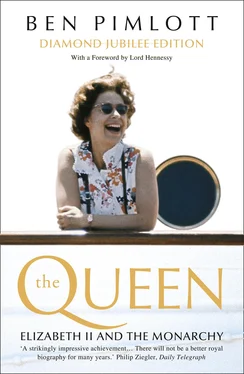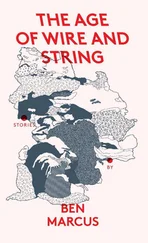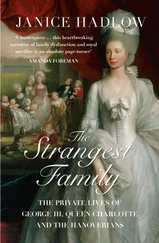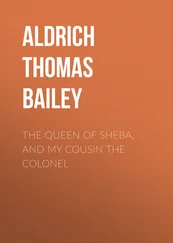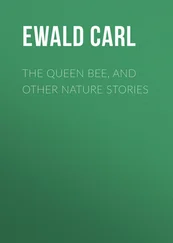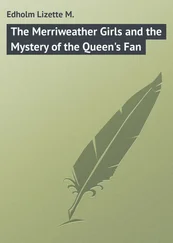According to Crawfie, she was an indifferent knitter. 18However, the picture was not entirely false. Whatever she may have read in her teens, her adult tastes in literature and drama were, as a British observer put it delicately in the 1950s, ‘those of the many rather than the few’. 19In this respect, as in others, efforts to nip any blue-stocking tendency in the bud had succeeded.
It was also true that she enjoyed music, especially if it was not too demanding. She took a keen interest in the ‘musicals’ currently in vogue on the London stage. She liked the satirical entertainment 1066 and All That so much that she obtained a copy of the song ‘Going Home to Rome’ from the management. 20Jean Woodroffe (then Gibbs), who became her lady-in-waiting early in 1945, remembers that the two of them would while away the time on long car journeys to and from official engagements by singing popular songs. 21After the war ended, weekly madrigal sessions were held at the Palace – either Margaret or a professional musician played the piano and both girls sang, together with some officers in the Palace guard. 22
One madrigal singer was Lord Porchester (now the seventh Earl of Carnarvon) who had known Princess Elizabeth when he was in the Royal Horse Guards at the end of the war, and had taken part in the Buckingham Palace VE-Night escapade. Porchester (‘Porchey’)* also shared the Princess’s interest in riding, breeding and racing horses. During the war, they had seen each other at the Beckhampton stables on the Wiltshire Downs, where horses bred at the royal studs were trained. Porchester was the grandson of the fifth Earl of Carnarvon, who, as well as being the joint discoverer of the tomb of Tutenkhamun, had been the leading racehorse owner-breeder at the beginning of the century, and had set up the Highclere Stud at his Hampshire home. His father, the sixth Earl, had bred the 1930 Derby winner Blenheim. ‘The King thought I was a suitable racing companion of her age group,’ says Lord Carnarvon. ‘There were not many people then who could accompany her to the races.’ Since the 1940s, he says, ‘We have developed our interest together, and it has got sharper.’ 23He was beside her at Newmarket in October 1945, and at almost every Derby since.
Before the war, horses had been Elizabeth’s childhood fantasy. During it, her confidence as a rider had been built up with the help of Horace Smith. After 1945, the horse world became her chief relaxation and escape. She read widely on the subject, extending her knowledge of horse management, welfare and veterinary needs, and she developed a sixth sense as a trainer. ‘She has an ability to get horses psychologically attuned to what she wants,’ says Sir John Miller, for many years Crown Equerry and responsible for all the Queen’s non-race horses, ‘and then to persuade them to enjoy it.’ 24What started as a hobby later became a serious enterprise, and an area for her own independent professionalism. ‘Prince Philip shrewdly kept out of it all,’ says a former royal employee. ‘Otherwise he would have dominated the discussion.’ 25
For Elizabeth, horse breeding was a family interest. The royal studs had been founded at Hampton Court in the sixteenth century, later moving to Windsor. In the late nineteenth century, the then Prince of Wales, later Edward VII, had re-confirmed the royal hobby by establishing the Sandringham stud. Royal interest seemed curiously, though perhaps not surprisingly, to mirror the royal fascination with dynastic genealogy. The result had been an exclusive attitude to bloodlines. ‘Royal managers had avoided sending to some of the best stallions, often because they did not like the owner,’ Carnarvon recalls. On one occasion, an otherwise ideal candidate for covering a royal mare was rejected by Captain Charles Moore, George VI’s (and later his daughter’s) Manager of the Royal Studs, on the grounds that it belonged to a bookmaker. In much the same way, the King – who took a mild interest in racing – had a patriotic approach to the sport. Not only did he prefer to send to British-based stallions, it upset him if French horses too often won British races. 26
Lord Porchester, who had studied at Cirencester Agricultural College and had acquired a knowledge of the principles of ‘hybrid vigour,’ tried to advance royal practice by encouraging the family to be less fussy about equestrian social backgrounds. As Porchey and Elizabeth became more expert together, a quiet revolution came eventually to overtake royal breeding methods. After Elizabeth became Queen, her interest increased, and in 1962 she leased Polhampton Lodge Stud, near Overton in Hampshire, for breeding race horses – adding to the studs (Sandringham and Wolverton) at Sandringham. In 1970, Lord Porchester took over as the Queen’s racing manager. Over the years their shared passion for horses became the basis for a close friendship. ‘With Henry Porchester, racing and horses bring them continually together,’ says a former royal adviser. ‘Henry tells her a lot of gossip. She’s very fond of him and he’s devoted to her.’ 27
Princess Elizabeth’s other recreations were also uncompromisingly those of royalty and the landed aristocracy. Like her grandfather, father and mother, she was relentless in her pursuit of the fauna on the Sandringham and Balmoral estates. She did not use a shotgun, but she became skilled with a rifle, and in stalking deer during Scottish holidays. One report described how, while staying on the Invernesshire estate of Lord Elphinstone, the Queen’s brother-in-law, in October 1946, the twenty-year-old Princess followed a stag through the forest, ‘aimed with steadiness and brought down the animal,’ which turned out to be a twelve-pointer. 28It was a sport for which she was well-equipped. After visiting Balmoral during the war, King Peter of Yugoslavia, Alexandra’s husband, expressed admiration at the quality of the rifle she lent him. 29Later, Porchey gave her a .22 rifle as a present.
The pace quickened at the end of the war, in shooting as in everything else. Aubrey (now Lord) Buxton, a Norfolk neighbour who became a close friend of the royal couple – and who later helped to inspire Philip’s interest in wildlife and conservation – described one extraordinary day’s shooting at Balmoral, a fortnight after the Japanese surrender. A royal house party, headed by the Monarch, set itself the task of killing as wide a range of different birds and animals as possible. The King set out in search of ptarmigan, somebody else had to catch a salmon and a trout, and so on. After a hard day, the final bag in the game book was 1 pheasant, 12 partridges, 1 mountain hare, 1 brown hare, 3 rabbits, 1 woodcock, 1 snipe, 1 wild duck, 1 stag, 1 roe deer, 2 pigeons, 2 black game, 17 grouse, 2 capercailzie, 6 ptarmigan, 2 salmon, 1 trout, 1 heron and a sparrow hawk. Princess Elizabeth was the proud dispatcher of the stag. 30
Margaret did not share Elizabeth’s sporting enthusiasms – one of the factors which led to the growth of different and contrasting circles of friends. To some extent, despite the age gap, their circles overlapped. Weekend parties in the mid-1940s included the heirs to great titles, who were regarded as potential husbands for either of them. Names like Blandford, Dalkeith, Rutland, Euston, Westmorland tended to crop up. ‘There was a good deal of speculation,’ an ex-courtier remembers, ‘about whether any of them would do.’ When Philip became a fixture, the circles diverged. Margaret began to attract a smarter set: her friends thought of themselves as gaier, wilder, wittier, and regarded Elizabeth’s as grand, conventional and dull.
As well as the gap in interests, the distinction reflected a difference in temperament. ‘Princess Margaret loved being amused,’ suggests one of her friends, ‘in a way that her sister didn’t.’ It was also a product of the princesses’ contrasting relationship with the King. Elizabeth, the introvert, had been brought up to be responsible; Margaret, the extrovert, to be pretty, entertaining and fun. ‘George VI had a strong concern for Princess Elizabeth,’ says the same source, ‘but he had a more fatherly attitude towards her sister. I remember him leaning on a piano when she was singing light-hearted songs, with an adoring look, thinking it was frightfully funny.’ While Margaret reached out to people, Elizabeth seemed never to give much away. A lady-in-waiting recalls her, in the mid–1940s, as ‘very charming, but very quiet and shy – much more shy than later.’ 31Colville formed a similar impression. ‘Princess Elizabeth has the sweetest of characters,’ he recorded, shortly after joining her, ‘but she is not easy to talk to, except when one sits next to her at dinner, and her worth, which I take to be very real, is not on the surface.’ 32
Читать дальше
